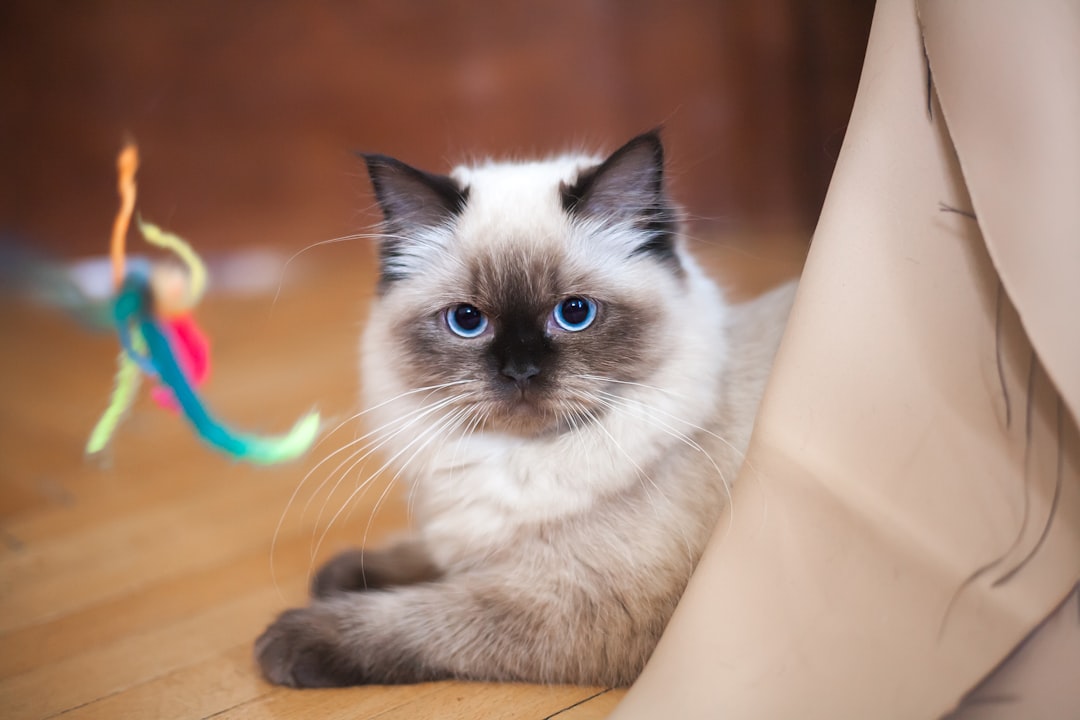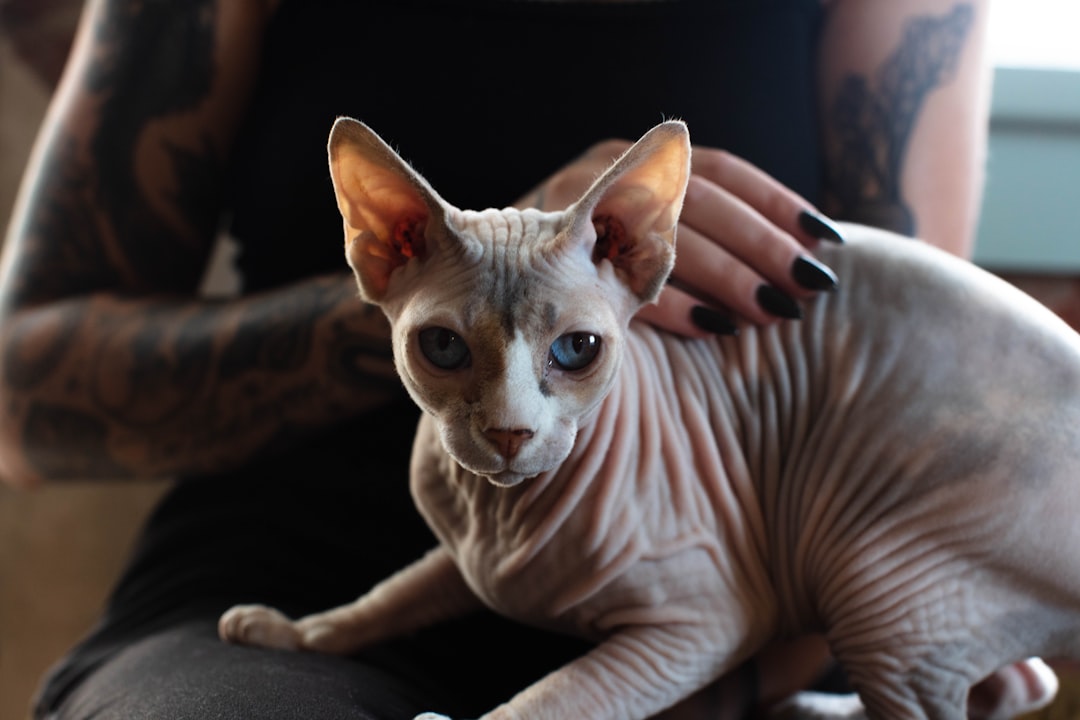Cats are fascinating creatures, often surprising us with their unique behaviors and quirks. One common yet puzzling phenomenon is cat jerking in sleep, which can leave many pet owners wondering what it means for their feline friends. Understanding the intricacies of feline sleep patterns and movements is essential not only for deciphering these curious jerks but also for promoting overall cat health. In this blog post, we will explore the science behind how cats sleep, common reasons for these unsettling movements, and what it may indicate about your cat’s well-being. By learning how to recognize disturbances in sleep and creating a nurturing environment, you can help your cat achieve restful slumber and a happier life. Let’s delve into the fascinating world of cat sleep to better understand those nighttime antics and ensure your furry companion sleeps soundly.
What Does It Mean When Your Cat Jerks in Sleep?
Understanding your cat’s sleep behavior can provide valuable insights into their overall health and well-being. One common phenomenon that cat owners notice is cat jerking in sleep. This involuntary movement often raises questions about its significance and frequency.
Understanding Involuntary Movements
Cats, like humans, experience various sleep stages, including light sleep and deep sleep. During these phases, particularly the Rapid Eye Movement (REM) stage, involuntary movements occur. These can manifest as twitching, jerking, or even vocalizations.
| Movement Type | Description | Potential Interpretation |
|---|---|---|
| Twitching | Small muscle contractions, especially in the limbs | Active dreaming or processing stimuli |
| Jerking | Sudden, larger muscle movements | May indicate a response to dreams or reflexes |
| Vocalizing | Soft meows or purrs during sleep | Engaging in dream dialogue or emotions |
Signs of REM Sleep in Cats
During REM sleep, you may observe several tell-tale signs. These can include:
- Eye Movements: Rapid eye shifts behind closed eyelids.
- Facial Twitches: Subtle movements around the whiskers or ears.
- Paw Movements: Kneading or twitching of the paws.
Understanding that these behaviors are typical for cats can reassure pet owners. They are not necessarily a cause for concern. Rather, they highlight the complexity of feline dreams and sleeping patterns. A cat’s sleep quality can significantly impact its health, so paying attention to these movements is essential for responsible pet care.
The Science Behind Feline Sleep Patterns
Understanding the science behind feline sleep patterns can help cat owners recognize what is normal behavior and what may indicate a potential issue. Cats have unique sleep needs, and their sleep cycles differ from those of humans.
Normal Sleep Duration for Cats
Cats are known for their love of sleep, typically averaging 12 to 16 hours per day. This amount may vary based on factors like age, health, and activity level. Here’s a quick overview:
| Age Group | Average Sleep Duration |
|---|---|
| Kittens | 16-20 hours |
| Adult Cats | 12-16 hours |
| Senior Cats | 16-18 hours |
Cats sleep in short bursts, often waking up to check their surroundings or play. Such behavior is a natural instinct rooted in their hunting heritage.
Phases of Cat Sleep: REM and Non-REM
Feline sleep generally consists of two main phases: REM (Rapid Eye Movement) and Non-REM sleep.
- Non-REM Sleep: This is the restful stage where your cat undergoes deep sleep, allowing their body to rejuvenate. During this phase, you might notice your pet lying still and enjoying undisturbed rest.
- REM Sleep: Cats experience this phase approximately every 20 minutes. It’s during REM sleep that you may see cat jerking in sleep, as they dream and process daily experiences. In this phase, they can exhibit movement, such as twitching paws or flickering whiskers, which are normal parts of their dreaming state.
By understanding these sleep stages, owners can appreciate the significance of the cat jerking in sleep and recognize that it’s often a harmless, entertaining aspect of feline behavior.
Common Reasons for Cat Jerking in Sleep
Dreaming in Cats
Like humans, cats experience rapid eye movement (REM) sleep, a phase where dreaming occurs. During this stage, their brain activity increases, often causing cat jerking in sleep as they react to their dreams. It is common to see twitching or jerking movements, which may indicate your feline is chasing an imaginary prey or exploring a vibrant dream world. According to studies, up to 80% of a cat’s sleep may be spent in REM, making these jerking movements quite normal and indicative of their active imagination.
Neurological Responses During Sleep
Another common reason for sudden movements during slumber is the cat’s neurological processing. Cats have a complex nervous system that influences their muscle control. When transitioning between sleep stages, a cat may exhibit brief jerks as their body shifts between deep sleep and lighter sleep phases. This phenomenon demonstrates the brain’s communication with muscles, allowing for involuntary reflexes.
| Reason | Description |
|---|---|
| Dreaming | Active mental processing during REM sleep leads to movements. |
| Neurological Reflexes | Body transitions between sleep stages result in involuntary jerks. |
Understanding these common reasons can help alleviate concerns and assure owners that such movements are a natural part of their cat’s sleep behavior.
Is Cat Jerking in Sleep Normal?
Typical Sleep Behaviors
Cats are known for their unique sleep patterns, typically sleeping 12 to 16 hours a day. It’s entirely common for felines to display various sleep movements, including twitching, paddling, or cat jerking in sleep. These behaviors often occur during the Rapid Eye Movement (REM) phase of sleep, when cats dream. During this stage, you may notice their whiskers twitching or their paws moving as if chasing something. This indicates that your cat is engaged in dreaming, which is a normal part of their sleep cycle.
Here’s a quick overview of typical sleep behaviors in cats:
| Behavior | Description |
|---|---|
| Twitching | Involuntary muscle contractions during REM sleep. |
| Soft meowing or chirping | Vocalizing during dreams, often a sign of excitement. |
| Rapid eye movement (REM) | Eyes may move beneath closed lids, indicating dreaming. |
| Stretching and rolling | Cats may often change positions and stretch out as they sleep. |
When to Be Concerned About Sleep Movements
While most sleep movements are harmless, certain behaviors can indicate underlying issues. If you observe frequent or violent cat jerking in sleep, it might raise some concerns. Pay attention to the following signs:
- Increased frequency: If the jerking occurs more often than usual.
- Accompanying distress: If your cat shows signs of distress or discomfort upon waking.
- Physical health changes: Weight loss, lethargy, or unusual behavior when awake can signal health issues.
In such cases, it’s advisable to consult a veterinarian to rule out any potential health problems. Understanding your cat’s normal sleep behaviors helps differentiate between signs of a healthy feline and those that may require further attention.
How Sleep Affects a Cat’s Health
Importance of Quality Sleep for Cats
Cats are known for their love of sleep, averaging 12 to 16 hours a day. This extensive period of slumber is crucial for their overall well-being. Quality sleep enables cats to conserve energy, repair tissues, and maintain a healthy immune system. Here’s how quality sleep affects a cat’s health:
| Health Aspect | Benefits of Quality Sleep |
|---|---|
| Energy Levels | Restores energy for daily activities |
| Cognitive Function | Enhances memory and learning abilities |
| Stress Reduction | Lowers stress levels and promotes relaxation |
| Physical Health | Supports healing processes and robust immune responses |
Effects of Sleep Deprivation
When a cat experiences inadequate sleep, it can lead to several health issues. Sleep deprivation might manifest in behavioral changes, weight fluctuations, or other physical health problems. Here are some common effects:
| Consequence | Description |
|---|---|
| Increased Aggression | Sleep-deprived cats may become irritable and aggressive |
| Obesity | Lack of rest may lead to overeating or inactivity |
| Weak Immunity | Increased vulnerability to illnesses due to a compromised immune system |
| Cognitive Decline | Prolonged lack of sleep can affect learning and memory retention |
In summary, understanding how cat jerking in sleep relates to their overall sleep quality can help pet owners appreciate the vital role of rest in maintaining their feline friends’ health. A well-rested cat is often a happier, healthier companion.
Recognizing Disturbances in Sleep Patterns
Monitoring Changes in Sleep Behavior
Understanding your cat’s sleep behavior is crucial for ensuring their well-being. Cats typically sleep between 12 to 16 hours a day, but fluctuations in this routine can be indicative of underlying issues. It’s essential to monitor not only the duration but also the quality of sleep. Keep an eye on changes such as:
| Change | What It Might Indicate |
|---|---|
| Increased daytime sleep | Potential boredom or lack of stimulation |
| Frequent waking | Possible stress, anxiety, or discomfort |
| Irregular sleep phases | Medical conditions or disruptions in routine |
Tracking these changes may empower you to spot disturbances early.
Signs of Sleep Disorders in Cats
As a responsible pet owner, recognizing signs of sleep disorders can be pivotal to your cat’s health. Look for the following indicators:
- Persistent vocalization during sleep could signal discomfort.
- Frequent transitions between sleep stages, like jerking movements, may suggest restlessness.
- Excessive lethargy or lack of interest in usual activities once awake can indicate an issue.
If you notice your cat exhibiting these behaviors alongside cat jerking in sleep, consider consulting a veterinarian for further evaluation. Understanding these signs can help ensure your feline friend enjoys quality rest, contributing greatly to their overall health.
Caring for Your Cat’s Sleep Environment
Creating a Cozy Sleep Space
A well-designed sleep environment can significantly enhance your cat’s comfort and quality of sleep. To foster a cozy sleeping area, consider the following key elements:
| Element | Suggestions |
|---|---|
| Bedding | Use soft, washable blankets or cat beds that provide warmth. |
| Location | Choose a quiet, safe spot away from drafts and household activity. |
| Temperature | Maintain a comfortable room temperature, ideally between 70-75°F (21-24°C). |
| Hideaways | Incorporate enclosed spaces like cat caves or boxes where your cat can retreat. |
Cats often seek places that give a feeling of safety, which is crucial for restful slumber. This approach not only minimizes disturbances but also promotes deeper, more restorative sleep.
Reducing Stress Factors Around Sleep
Reducing stress in your cat’s sleep environment is essential for better sleep quality. Here are several strategies to achieve this:
| Strategy | Implementation |
|---|---|
| Noise Control | Minimize loud sounds; use white noise machines if necessary. |
| Familiar Scents | Introduce familiar smells, such as a piece of your clothing. |
| Regular Routine | Establish consistent feeding and play schedules to create predictability. |
| Socialization | Ensure your cat feels secure by providing ample interaction and positive experiences. |
By recognizing and addressing potential stressors, you can help create an environment that allows your cat to relax completely. Consequently, your furry friend will benefit from uninterrupted sleep, reducing instances of cat jerking in sleep and promoting overall health and well-being.
What To Do If Your Cat Jerks Frequently in Sleep
When you observe your cat jerking in sleep, it can be disconcerting. However, understanding how to respond is crucial in ensuring their overall well-being. Here are key steps to take.
Consulting a Veterinarian
If your cat experiences frequent jerking during sleep, it’s wise to consult a veterinarian. They can assess your cat’s health and rule out underlying issues like:
| Condition | Description |
|---|---|
| Seizures | Uncontrolled electrical activity in the brain. |
| Sleep Disorders | Conditions that disrupt typical sleep patterns. |
| Anxiety or Stress-related Issues | Mental health conditions can cause restless sleep. |
Early intervention can lead to effective treatment, so keep a journal to track your cat’s sleep patterns and behaviors to share with your vet.
Home Care Tips for Better Sleep
In addition to seeking veterinary care, creating a calming environment can help minimize disruptions. Here are some practical tips to enhance your cat’s sleep quality:
| Tip | How It Helps |
|---|---|
| Provide a Comfortable Bed | A soft, cozy bed can make a significant difference. |
| Maintain a Consistent Routine | Regular feeding and playtime can promote better sleep. |
| Reduce Noise and Light | Dimming the lights and minimizing sound creates a serene atmosphere. |
These steps can help your furry friend feel more secure and relaxed, reducing the likelihood of cat jerking in sleep episodes. Keeping your cat’s environment peaceful and consulting a vet if issues persist can ensure they enjoy restful and restorative sleep.
Feline Behavior: Understanding Sleep Movements Beyond Jerking
Other Common Sleep Movements
Cats exhibit a range of sleep movements beyond just cat jerking in sleep. Here are some common behaviors observed:
| Sleep Movement | Description |
|---|---|
| Purring | Indicates contentment; can occur during deep sleep. |
| Twitching | Involuntary muscle contractions, often in the paws or face. |
| Whisker Quivering | Fine movements of the whiskers, typically during REM. |
| Soft Vocalizations | Gentle meows or chirps may happen in response to dreams. |
These behaviors can provide insight into your cat’s emotional state and their dream experiences.
Behavioral Context of Sleep Movements
Understanding the context of these sleep movements is crucial in interpreting your cat’s wellbeing. For instance, when a cat is purring while twitching, it may indicate that they are having a pleasant dream or feel secure in their environment. An analysis of the overall sleep routine can shed light on their mental state, as numerous movements may suggest different stages of sleep or levels of comfort.
Furthermore, some movements, like cat jerking in sleep, might be more pronounced in younger cats, who are still developing their sleep patterns, while older cats may display less frequent jerking due to deeper, more restful sleep. In essence, recognizing these maneuvers, whether they indicate dreams, relaxation, or even distress, can foster a deeper connection between you and your feline friend.
Myths and Facts About Cats Sleeping
Debunking Common Myths
Cats have long been wrapped in misconceptions pertaining to their sleeping habits. Here are some prevalent myths that deserve clarification:
| Myth | Fact |
|---|---|
| Cats sleep all day because they are lazy. | Cats are crepuscular, meaning they are most active during dawn and dusk, utilizing sleep to conserve energy. |
| Cats only dream when they twitch. | While twitching indicates they are in a REM sleep phase where dreaming occurs, it doesn’t mean dreaming is exclusive to them. |
| Felines sleep better in total silence. | Cats can adapt to various sleep environments; they often feel secure and sleep deeper when they can hear soft, familiar sounds. |
Understanding these myths can help cat owners better appreciate their pet’s sleep behavior.
Interesting Facts About Cat Sleep
Cats are fascinating creatures, especially when it comes to their sleeping patterns. Here are some intriguing facts:
- Average Sleep Duration: Cats sleep, on average, between 12 to 16 hours a day, with some breeds even reaching up to 20 hours.
- REM Sleep: Cats experience REM (Rapid Eye Movement) sleep, which is important for brain development and memory retention, much like humans.
- Sleep Positions: The way a cat sleeps can indicate its comfort level; curled up suggests a need for warmth, while sprawled out denotes relaxation and security.
By knowing these facts, you can better understand the cat jerking in sleep phenomenon and appreciate the complexity of your feline companion’s sleeping habits.
Frequently Asked Questions
Why do cats jerk while sleeping?
Cats often jerk or twitch during sleep due to the presence of REM (Rapid Eye Movement) sleep, which is when dreaming occurs. This state allows them to process experiences and memories from the day. The jerking movements, such as twitching paws or whiskers, are typically normal and signify that your cat is engaged in dreaming, possibly reliving moments of playfulness, hunting, or exploring.
Are feline sleep movements normal?
Yes, the various movements observed in sleeping cats, including jerking, twitching, and even occasional vocalizations, are completely normal. Cats experience multiple sleep cycles, including REM and non-REM sleep, and movements during REM sleep indicate that they are dreaming. It’s a regular part of feline behavior and suggests that your cat is healthy and getting a good night’s sleep.
How much sleep do cats need?
Cats are known for being champion sleepers, often spending around 12 to 16 hours a day asleep. Kittens and elderly cats may sleep even more, sometimes up to 20 hours daily. This extensive sleep is vital for their health, allowing them to restore energy, process information, and maintain their physical health. It’s important, however, to monitor their waking periods to ensure they engage in play and exercise.
When should I be concerned about my cat’s sleep movements?
While some twitching and jerking during sleep is normal, you should monitor your cat for any unusual behaviors that may indicate health issues. If you notice excessive twitching, yowling, or signs of distress, it might be worthwhile to consult a veterinarian. Additionally, if your cat seems lethargic or unresponsive during waking hours, these could be signs of potential health problems that require professional attention.
Do different breeds of cats have different sleep patterns?
While all domestic cats share similar sleep architecture, certain breeds may exhibit variations in their sleep habits and energy levels. For example, breeds like the Siamese and Burmese are known to be more active and may require more playtime during their waking hours, leading to distinct sleeping patterns. Conversely, breeds like the Persian may be more laid-back, resulting in longer sleep sessions. Individual personality and lifestyle factors also play a significant role.



